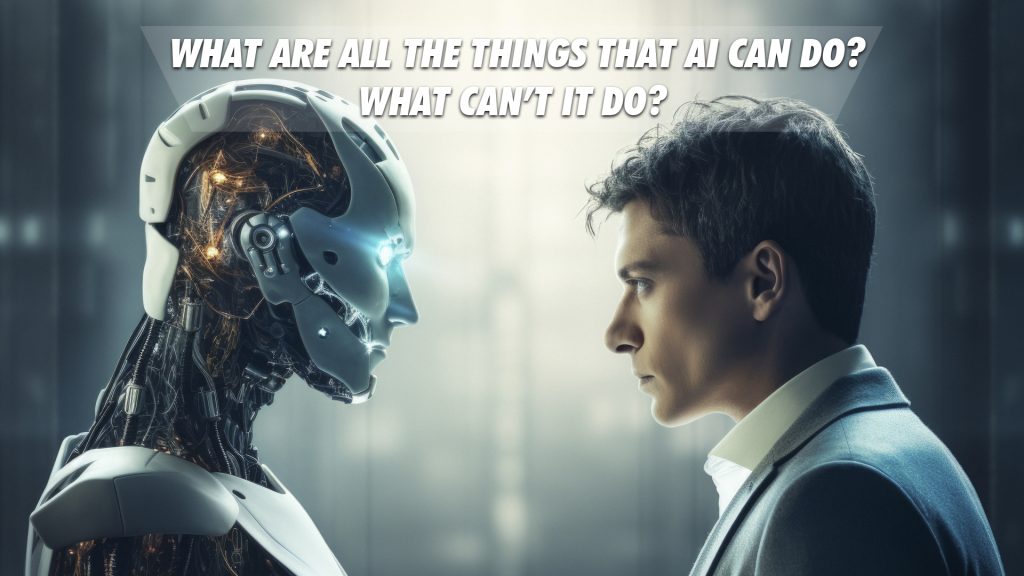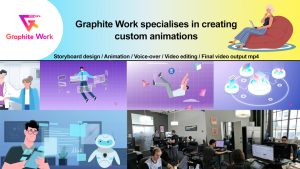Artificial intelligence (AI) is rapidly transforming industries, streamlining workflows, and enhancing our daily lives. From automating tedious tasks to providing predictive analytics, AI is an undeniably powerful tool. However, despite its advancements, AI remains fundamentally limited in comparison to human intelligence. While AI can perform specific tasks far more efficiently than humans—sometimes executing a portion of a job with incredible speed and precision—it is still far from replacing human ingenuity, emotional intelligence, and complex reasoning.
Many fear that AI is poised to take jobs away, but the truth is more nuanced. AI won’t necessarily replace humans outright; rather, the individuals who leverage AI effectively will outperform those who don’t. Understanding what AI can and cannot do helps us navigate the evolving landscape of work and creativity.
The Capabilities of AI: What Can AI Do?
AI has made astonishing progress over the years, fundamentally changing the way businesses operate and individuals interact with technology. Some of its most notable capabilities include:
1. Automation of Repetitive Tasks
AI excels at handling repetitive, rule-based tasks with consistency and accuracy. In industries like manufacturing, finance, and customer service, automation powered by AI reduces manual work and boosts efficiency. AI-driven bots, for example, can manage data entry, respond to simple customer inquiries, and process financial transactions faster than any human.
2. Data Processing & Analytics
AI can analyze massive amounts of data in seconds, identifying patterns and insights that would take humans exponentially more time. From financial forecasting to medical diagnoses, AI-powered analytics assist professionals in making data-driven decisions with greater accuracy.
3. Image & Speech Recognition
AI has dramatically advanced in processing and recognizing visual and auditory information. Facial recognition systems verify identities, voice assistants interpret commands, and AI-generated images exhibit remarkable detail—all areas where AI operates with high precision.
4. Predictive Capabilities
Machine learning algorithms can predict trends, consumer behavior, and potential risks by analyzing historical data. Businesses use AI-driven predictive models to optimize marketing strategies, manage supply chains, and even forecast financial markets.
5. Content Generation & Language Processing
AI-driven language models generate human-like text for articles, emails, and customer service responses. AI can even translate languages, summarize texts, and write code, all of which streamline tasks across industries.
The Limitations of AI: What Can’t AI Do?
Despite AI’s extraordinary capabilities, it remains constrained by several inherent limitations. AI lacks the ability to truly think, feel, or understand the complexities of human existence in the way that we do.
1. Creative Thinking & Innovation
While AI can generate content, mimic artistic styles, and assist in brainstorming, it cannot innovate independently. AI relies on patterns and data from existing sources rather than original thought. Humans, by contrast, have the ability to think abstractly, challenge assumptions, and create entirely novel ideas.
2. Emotional Intelligence & Empathy
AI does not possess emotions—it cannot feel joy, sadness, or empathy. While AI chatbots can simulate polite and supportive interactions, they lack true emotional intelligence. Humans, on the other hand, are deeply perceptive and can navigate complex interpersonal dynamics with genuine understanding.
3. Ethical Decision-Making & Moral Judgment
AI operates based on programmed algorithms, unable to make ethical or moral decisions the way humans can. While AI can analyze facts, it does not comprehend nuances of justice, fairness, or ethical dilemmas. Humans must ultimately decide how AI-driven processes align with ethical standards.
4. Adaptability to Unstructured Environments
AI performs well in structured environments but struggles with unpredictable situations. For example, AI can drive cars under controlled conditions, but navigating real-world complexities—such as sudden weather changes or ethical dilemmas on the road—remains a challenge.
5. Common Sense & Intuition
AI lacks basic common sense and instinct. While algorithms process data rapidly, they fail to grasp intuitive reasoning in situations where humans instinctively understand cause and effect.
Will AI Take Jobs or Empower Workers?
A pressing concern in the AI revolution is its impact on employment. Many worry that AI will replace human workers, leading to mass unemployment. However, AI isn’t necessarily a job destroyer—it’s a job transformer.
AI Won’t Take Your Job, but Someone Using AI Might
The truth is that AI will not eliminate human jobs entirely, but it will change how jobs are performed. The workers who embrace AI to automate portions of their tasks will gain a competitive edge, increasing their productivity and efficiency. Meanwhile, those who resist AI may find themselves outpaced.
For example, a graphic designer using AI-powered design tools can create faster, smarter designs than those relying solely on manual methods. Similarly, an entrepreneur utilizing AI-driven analytics can make more informed business decisions.
AI as an Assistant, Not a Replacement
Rather than replacing humans, AI is best used as an assistant—a tool that enhances productivity without eliminating human input. From automating mundane tasks to offering strategic insights, AI should be integrated rather than feared.
Final Thoughts: Embracing AI for a Brighter Future
AI is a groundbreaking technology, but it is not a replacement for human intelligence. It excels in efficiency, automation, and data processing, but falls short in creativity, ethics, emotional intelligence, and adaptability. Instead of fearing AI, individuals and businesses should embrace it as a powerful tool that complements human expertise.
Ultimately, the person who learns to work with AI—rather than against it—is the one who will thrive in the future workforce.








